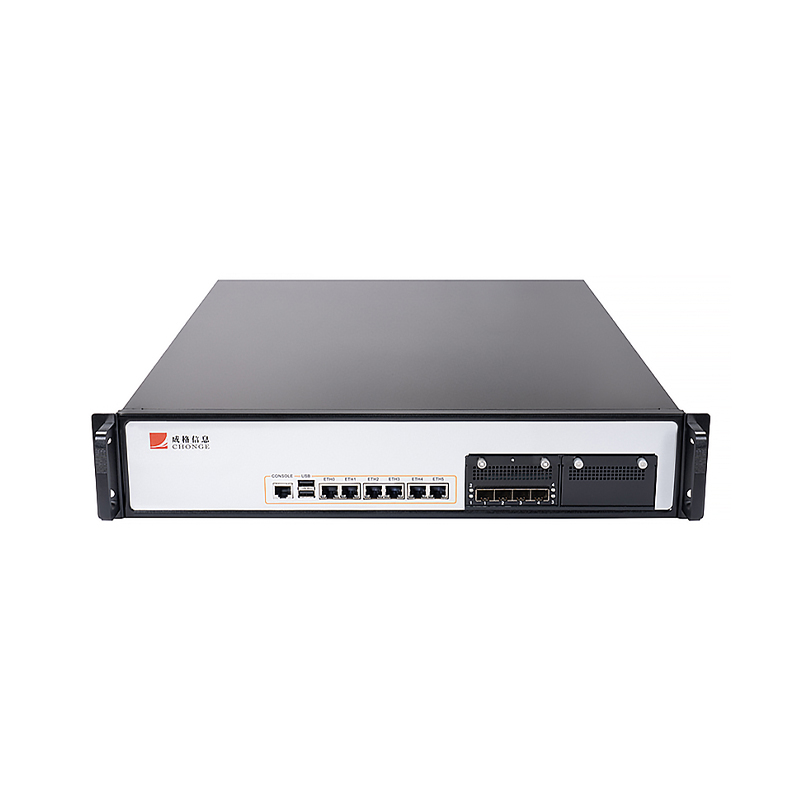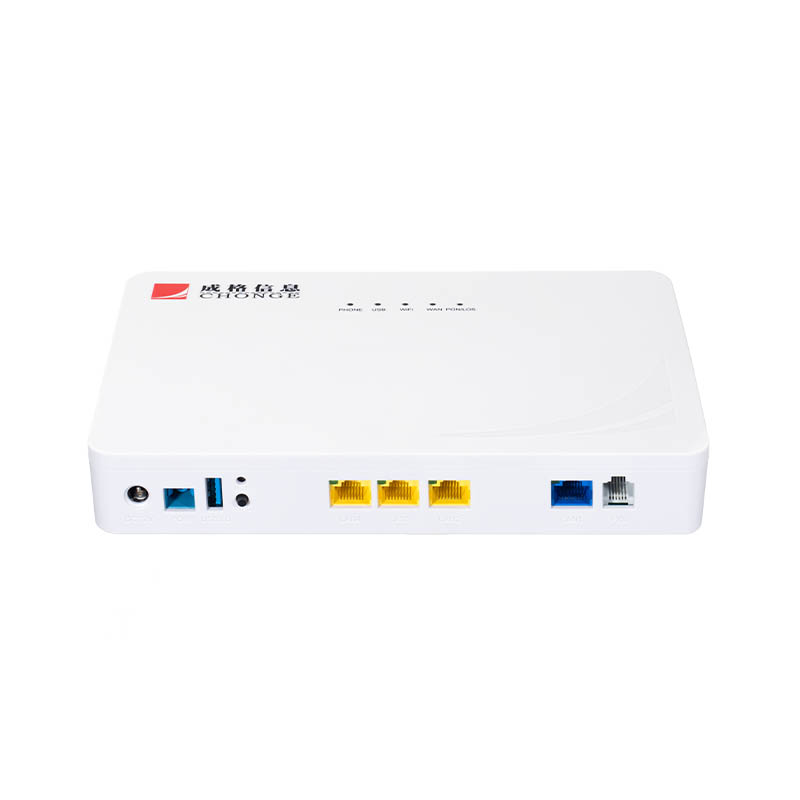How can OLTs achieve unified access to campus all-optical networks?
Release Time : 2025-10-23
Amid the deepening informatization of education, campus networks are evolving from traditional "internet access" to high-speed, intelligent, converged, and reliable all-optical networks. Diverse scenarios, such as teaching buildings, dormitories, libraries, administrative offices, security monitoring, and smart classrooms, place higher demands on bandwidth, stability, and management efficiency. Traditional switch-based copper cable LANs face challenges such as complex cabling, numerous weak-current rooms, difficult maintenance, and bandwidth bottlenecks, making them unable to meet the technological development needs of the next decade. During this transformation, how OLTs (Optical Transmitters) achieve unified access to campus all-optical networks is crucial for building a modern smart campus network architecture.
As the core control device of the passive optical network (PON), the OLT serves as the "brain" of the campus all-optical network. Using optical fiber as the backbone transmission medium, it extends data signals from the central computer room to every corner of the campus, enabling unified access for all scenarios, including teaching, living, and administration. Unlike traditional networks that deploy switches layer by layer, the OLT utilizes a point-to-multipoint tree topology, connecting multiple remote optical network units (ONUs) via a single fiber, significantly reducing backbone fiber usage and the number of intermediate active devices. This architecture fundamentally simplifies the network hierarchy, centralizing the low-voltage electrical equipment previously scattered across floors into a central computer room for unified management. This significantly simplifies physical cabling and flattens the network structure.
In terms of access capabilities, the OLT offers powerful aggregation and scheduling capabilities. It supports multiple optical access standards, including GPON, XG-PON, and even XGS-PON, enabling flexible bandwidth allocation based on the service needs of different campus areas. Whether it's high-concurrency online classes and HD video on demand in teaching buildings, daily internet access and live streaming for students in dormitories, or high-volume video backhaul for security systems, the OLT ensures smooth operation of all services through dynamic bandwidth allocation. Furthermore, it can uniformly carry data, voice, video, and IoT services, enabling multi-network convergence and avoiding redundant cabling and resource waste.
The OLT's deployment options are also highly adaptable to the diverse campus environment. For small and medium-sized schools or partial renovation projects, box-type OLTs are compact, flexible, and can be quickly deployed in existing equipment rooms. For large universities or newly built campuses, chassis-type OLTs offer high port density and robust scalability, supporting thousands of users simultaneously and meeting future capacity expansion needs. Regardless of the form factor, OLTs seamlessly integrate with existing campus fiber resources, enabling reuse and renovation, while reducing construction costs.
More importantly, OLTs enable centralized and intelligent network management. Through a unified network management platform, operations and maintenance personnel can monitor the status of all ONUs in real time from the central equipment room, remotely configure, diagnose faults, analyze traffic, and issue policies without the need for layer-by-layer troubleshooting. If a network anomaly occurs in a building, the OLT can quickly locate the fault point and even remotely reboot remote devices, significantly improving response efficiency. This "centralized control, distributed access" model significantly reduces campus network O&M complexity and labor costs.
In terms of reliability, OLTs typically feature redundant power supplies, redundant master controllers, and link protection mechanisms to ensure the continuous and stable operation of core equipment. Even in extreme situations where a single point of failure occurs, the network can still maintain basic communications through backup paths, ensuring uninterrupted teaching activities. Furthermore, optical fiber inherently offers advantages such as electromagnetic interference resistance, long transmission distances, and a long lifespan, making it particularly suitable for complex environments and long service cycles like campuses.
The all-optical network built using OLTs not only resolves bandwidth bottlenecks and management challenges but also leaves ample room for the future development of smart campuses. Whether it's the introduction of 8K teaching videos, VR/AR immersive classrooms, or the expansion of campus IoT, smart lighting, and energy management systems, all-optical networks provide a solid foundation for future development.
In summary, OLTs, with their powerful access capabilities, flexible deployment methods, centralized management mechanisms, and high reliability, truly enable unified access to campus all-optical networks. They are not only a product of technological advancement but also crucial infrastructure for promoting the digital transformation of education, laying a solid foundation for the sustainable development of smart campuses.
As the core control device of the passive optical network (PON), the OLT serves as the "brain" of the campus all-optical network. Using optical fiber as the backbone transmission medium, it extends data signals from the central computer room to every corner of the campus, enabling unified access for all scenarios, including teaching, living, and administration. Unlike traditional networks that deploy switches layer by layer, the OLT utilizes a point-to-multipoint tree topology, connecting multiple remote optical network units (ONUs) via a single fiber, significantly reducing backbone fiber usage and the number of intermediate active devices. This architecture fundamentally simplifies the network hierarchy, centralizing the low-voltage electrical equipment previously scattered across floors into a central computer room for unified management. This significantly simplifies physical cabling and flattens the network structure.
In terms of access capabilities, the OLT offers powerful aggregation and scheduling capabilities. It supports multiple optical access standards, including GPON, XG-PON, and even XGS-PON, enabling flexible bandwidth allocation based on the service needs of different campus areas. Whether it's high-concurrency online classes and HD video on demand in teaching buildings, daily internet access and live streaming for students in dormitories, or high-volume video backhaul for security systems, the OLT ensures smooth operation of all services through dynamic bandwidth allocation. Furthermore, it can uniformly carry data, voice, video, and IoT services, enabling multi-network convergence and avoiding redundant cabling and resource waste.
The OLT's deployment options are also highly adaptable to the diverse campus environment. For small and medium-sized schools or partial renovation projects, box-type OLTs are compact, flexible, and can be quickly deployed in existing equipment rooms. For large universities or newly built campuses, chassis-type OLTs offer high port density and robust scalability, supporting thousands of users simultaneously and meeting future capacity expansion needs. Regardless of the form factor, OLTs seamlessly integrate with existing campus fiber resources, enabling reuse and renovation, while reducing construction costs.
More importantly, OLTs enable centralized and intelligent network management. Through a unified network management platform, operations and maintenance personnel can monitor the status of all ONUs in real time from the central equipment room, remotely configure, diagnose faults, analyze traffic, and issue policies without the need for layer-by-layer troubleshooting. If a network anomaly occurs in a building, the OLT can quickly locate the fault point and even remotely reboot remote devices, significantly improving response efficiency. This "centralized control, distributed access" model significantly reduces campus network O&M complexity and labor costs.
In terms of reliability, OLTs typically feature redundant power supplies, redundant master controllers, and link protection mechanisms to ensure the continuous and stable operation of core equipment. Even in extreme situations where a single point of failure occurs, the network can still maintain basic communications through backup paths, ensuring uninterrupted teaching activities. Furthermore, optical fiber inherently offers advantages such as electromagnetic interference resistance, long transmission distances, and a long lifespan, making it particularly suitable for complex environments and long service cycles like campuses.
The all-optical network built using OLTs not only resolves bandwidth bottlenecks and management challenges but also leaves ample room for the future development of smart campuses. Whether it's the introduction of 8K teaching videos, VR/AR immersive classrooms, or the expansion of campus IoT, smart lighting, and energy management systems, all-optical networks provide a solid foundation for future development.
In summary, OLTs, with their powerful access capabilities, flexible deployment methods, centralized management mechanisms, and high reliability, truly enable unified access to campus all-optical networks. They are not only a product of technological advancement but also crucial infrastructure for promoting the digital transformation of education, laying a solid foundation for the sustainable development of smart campuses.







